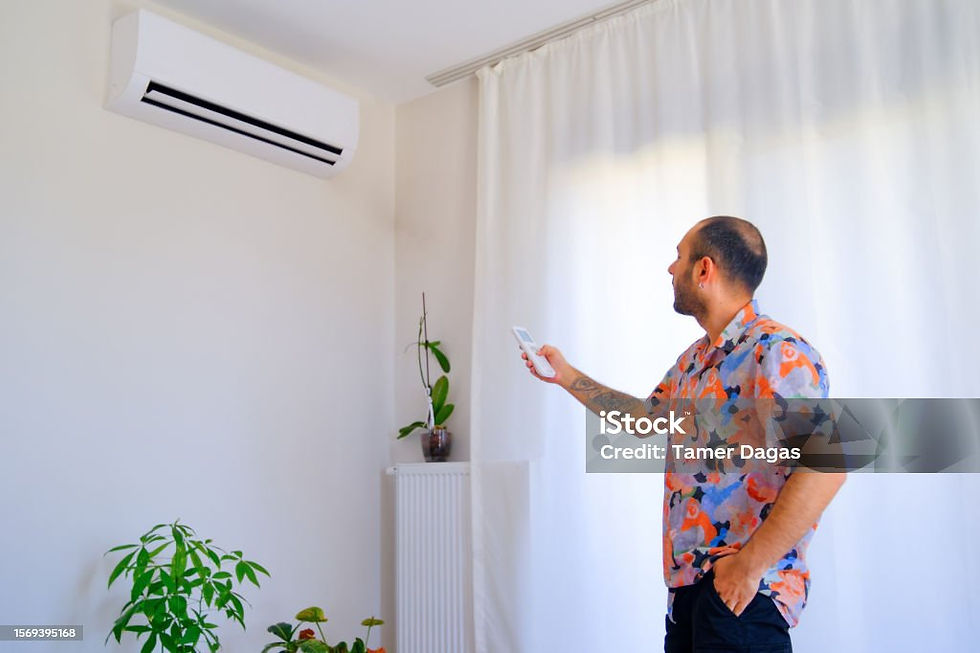How to Identify and Resolve Common HVAC Issues
- davidgrace1416
- Jun 1, 2024
- 3 min read
When your furnace malfunctions, it can disrupt your home's comfort and safety. Understanding the basics of furnace troubleshooting can help you diagnose and resolve common issues quickly. Whether it's a heating system failure in the dead of winter or a minor glitch, being able to troubleshoot can save you time, money, and frustration.

Check the Thermostat
Start by checking the thermostat settings to ensure they are correctly configured for heating mode and the desired temperature. If the thermostat is battery-operated, replace the batteries to rule out a power issue. Verify that the thermostat is level and free from any obstructions that could interfere with its operation.
Inspect Air Filters
A clogged or dirty air filter can restrict airflow and cause your furnace to work harder than necessary, leading to decreased efficiency and increased energy consumption. Check the air filter and replace it if it appears dirty or clogged. Regularly changing the filter every 1-3 months can help prevent future issues and extend the lifespan of your HVAC system.
Ensure Proper Airflow
Inspect all air vents and registers throughout your home to ensure they are open and unobstructed. Blocked vents can disrupt airflow and cause uneven heating or cooling. Additionally, check the air ducts for any signs of damage or leaks that could affect system performance. Proper airflow is essential for maintaining optimal comfort and efficiency.
Check the Circuit Breaker
If your furnace fails to turn on, check the circuit breaker or fuse box to ensure the power supply is not interrupted. Reset any tripped breakers or replace blown fuses as needed. Be sure to follow safety protocols when working with electrical components and consider contacting a professional if you are unsure or uncomfortable handling electrical repairs.
Inspect the Pilot Light
For gas furnaces, check the pilot light to ensure it is lit and burning steadily. If the pilot light is out, follow the manufacturer's instructions to relight it safely. If the pilot light continues to go out or appears weak, it may indicate a more significant problem that requires professional attention, such as a faulty thermocouple or gas valve.
Test the Blower Motor
The blower motor is responsible for circulating heated air throughout your home. Listen for any unusual noises coming from the blower motor or air handler, as this could indicate a problem with the motor or fan blades. If the blower motor fails to operate, it may be due to a faulty motor, capacitor, or relay that requires replacement by a qualified technician.
Check for Gas Leaks
If you smell gas near your furnace or suspect a gas leak, evacuate your home immediately and contact your gas utility provider or emergency services. Gas leaks are a serious safety hazard and require prompt attention from trained professionals. Avoid using any electrical devices or creating sparks, as this could ignite the gas and lead to a fire or explosion.
Schedule Professional Maintenance
While DIY troubleshooting can resolve many common furnace issues, some problems may require the expertise of a qualified HVAC technician. Schedule annual professional maintenance for your furnace to ensure it operates efficiently and safely year-round. A trained technician can identify and address any underlying issues before they escalate into major repairs or system failures.
Understanding the basics of furnace troubleshooting empowers homeowners to address common HVAC issues quickly and effectively. By following these simple steps and knowing when to seek professional assistance, you can keep your furnace running smoothly and maintain indoor comfort and safety throughout the year. Don't let furnace problems leave you in the cold—take proactive steps to keep your HVAC system in optimal condition.



Comments